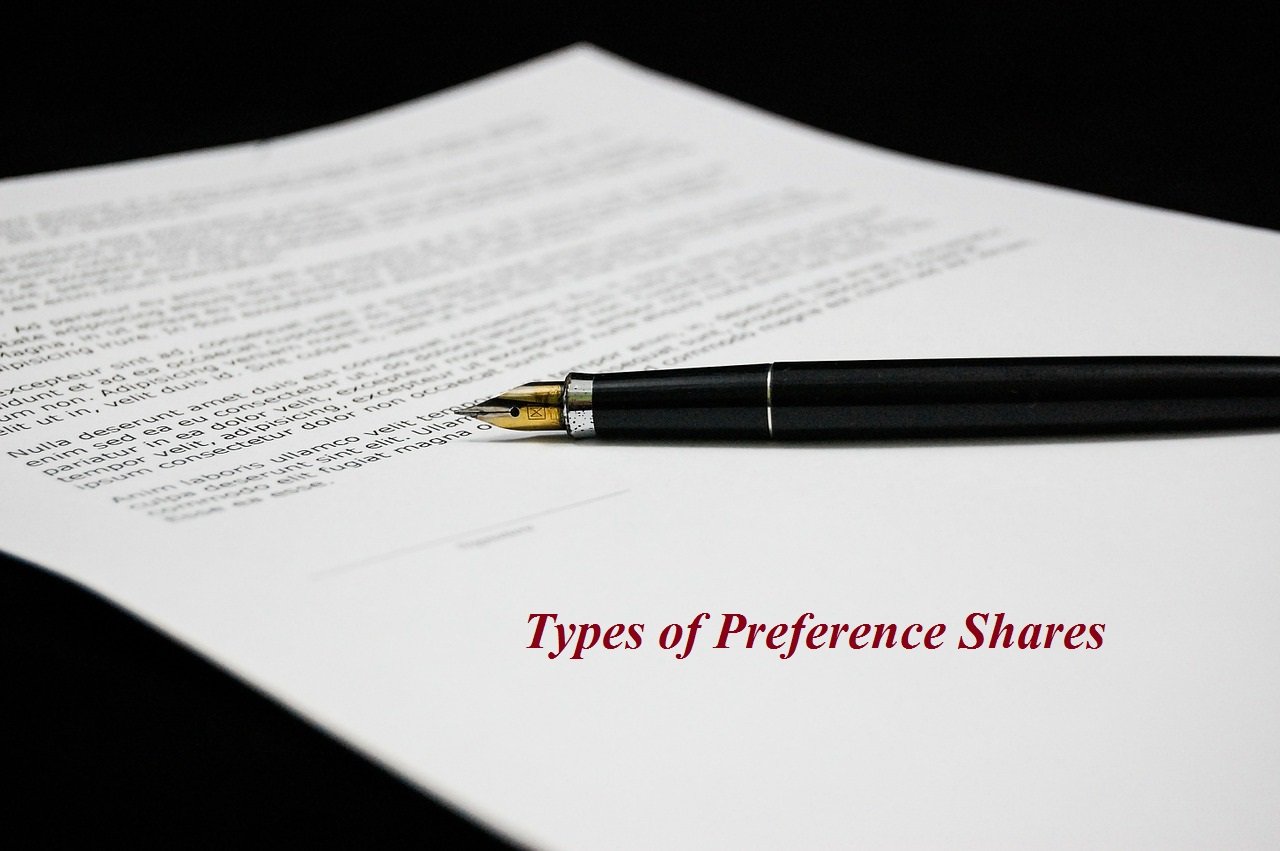The preference shares also known as Prefered Socks or Prefered are a special category of shares which provides a fixed rate of dividend. Preference shares are prefered over common equity shares when it comes to payment of dividend as well as at the time of recovery if the company wind up its operation, however, it doesn’t have the voting rights like common stocks.
In this article, we will focus on some significant types of preference shares in brief. For more detailed information about preference shares follow the link below.
Table of Contents
Types of Preference Shares:
There are some major types of preference share which offer some additional features and limitations for the issuer and investor’s point of view.
- Cumulative and Non-cumulative Preference shares
- Participating and Non-participating Preference shares
- Redeemable and Non- Redeemable Preference shares
- Convertible and Non-convertible Preference shares
- Callable Preference Shares
Let me explain one by one in details.
Cumulative and Non-cumulative Preference Shares:
Cumulative preference shares refer to those shares which have rights to claim a dividend whether the company makes a profit or not for the particular financial year.
Suppose if the company didn’t announce the dividend for the respective financial year, then such payment of the dividend is treated as an arrears/ dues to the company that has to be paid off before the next declaration of a dividend to the cumulative preference shareholders.
In other words, if the dividend amount is due and investor holds cumulative shares, then the company will have to pay the dividend at next declared date of payment before the equity shareholders.
Contrary, Non-cumulative preference shares don’t have such rights to claim the dividend even if the company is in the loss for a particular financial year.
It only provides rights to claim a dividend if the make the company makes a profit. Moreover, if the company makes a profit and don’t declare a dividend, such due payment is considered as an arrear. It doesn’t accumulate any dividend like cumulative preference shares even in circumstances of the loss.
In a nutshell, a dividend is paid off sooner or later only if the company makes profits.
Participating and Non-participating Preference shares:

Participating shares provide rights to participate if the company make a surplus profit after payment of other shareholders.
Participating shareholders not only paid off a fixed rate of dividend but at the same time, they can also claim in the surplus profit of the company which provide an opportunity to earn additional income.
On the other hand, in the case of Non-participating Preference shares, the shareholders don’t have such rights to participate if the company make a surplus profit. The shareholders are eligible to receive only mention (fixed) rate of dividend nothing else.
Convertible and Non-convertible Preference shares:
As the name suggests, convertible preferred shares can be converted to equity shares within the stipulated period of time mentioned by the company at the time of purchase of shares.
This means the shareholders have rights to convert their shares into equity shares before a certain time period at a specified rate.
Whereas, if the shareholders don’t have the rights to convert their shares to equity shares are known as Non-convertible preference shares.
Redeemable and Non-redeemable Preference shares:
Redeemable preference shares are those shares which can be redeemed after a certain period of time stated by the company.
In other words, we can say such share has the fixed maturity period such as debentures which can be repaid on or before the maturity date.
Contrary, Non-redeemable Preference shares can never be redeemed or can’t be repaid by the company.
Callable Preference Shares:
There is always a burden of a fixed-rate dividend payment whenever the companies issue the preference shares. Further, if the rate of dividend paid is suspected to decline in the market in future, it becomes another excess burden to the companies in the long run.
Therefore, to hedge the risk associated with a declination of the dividend rate, most of the companies issue the preference shares with a callable option. These types of shares are known as Callable Preference Shares. It provides rights to a company to redeem the share in the middle.
The company has to pay the premium price to the investor to redeem such shares since the investor will be in loss if the company repay the capital amount in the middle.
Thus preferred stocks with the callable option are one of the best options for the companies if the dividend rates are expected to decline.
Conclusion:
We have covered all the important types of preference shares. In fact, preference shares are classified on the basis of their unique features and purpose. As we observed above, some of them may be beneficial for the company and others can be beneficial for the investors as well.
Thus the companies, as well as investors, can choose the most suitable types of preference shares according to their interest.
Related Articles:
Difference between Equity Shares and Preference Shares
Types of Government Securities
